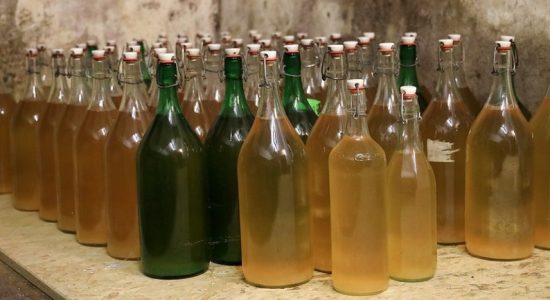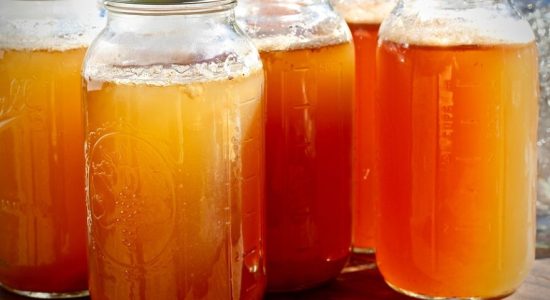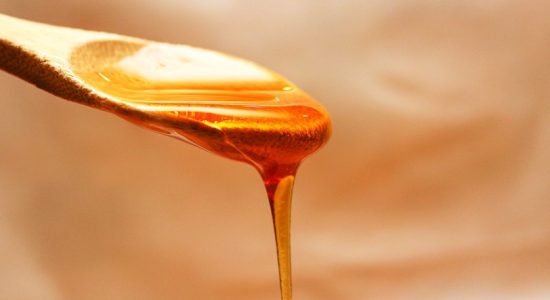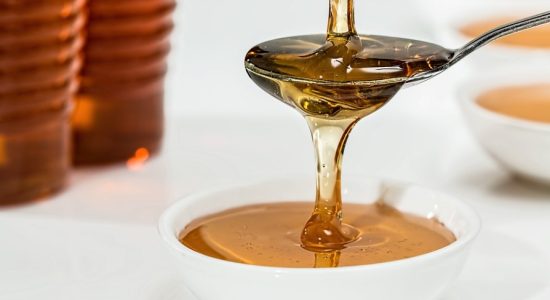How To Make Mead at Home – (Easy Step-by-Step)

Brewing mead at home can be a fun and rewarding hobby, and with the right ingredients and equipment, you can create a delicious, homemade mead that you can enjoy with friends and family.
To brew mead at home, you will need the following ingredients and equipment:
- Honey: The main ingredient in mead, honey provides the sugar that will be fermented to create alcohol. Choose a high-quality honey that has a strong, distinctive flavor.
- Water: You will need water to dilute the honey and create the mead base. Use clean, fresh water for the best results.
- Yeast: Yeast is used to ferment the honey and turn it into alcohol. Choose a mead-specific yeast strain for the best results.
- Sanitizer: Sanitizing your equipment is important to prevent contamination and ensure that your mead turns out properly. Use a no-rinse sanitizer designed for brewing.
- A fermenting vessel: This can be a glass carboy, a plastic bucket, or another type of container that can hold the mead as it ferments.
- An airlock and stopper: An airlock allows carbon dioxide to escape from the fermenting mead while preventing outside air from entering.
- A racking cane and tubing: This equipment is used to transfer the mead from the fermenting vessel to a secondary container, leaving behind the sediment that accumulates during fermentation.
- Bottles and caps: Once the mead has finished fermenting, you will need bottles and caps to store it.
To brew mead, follow these steps:
- Sanitize all of your equipment, including the fermenting vessel, airlock and stopper, racking cane and tubing, and bottles and caps.
- In a large pot, heat water over low heat and add the honey, stirring to dissolve it completely.
- Once the honey has dissolved, transfer the honey-water mixture to the fermenting vessel and let it cool to room temperature.
- Once the honey-water mixture has cooled, add the yeast and stir to combine.
- Place the airlock and stopper on the fermenting vessel and store it in a cool, dark place.
- Allow the mead to ferment for several weeks or months, until it reaches the desired level of sweetness and alcohol content.
- Once the mead has finished fermenting, use the racking cane and tubing to transfer it to a secondary container, leaving behind the sediment that has accumulated.
- Bottle the mead and store it in a cool, dark place to allow it to age and develop its flavor.
The most important thing to know about brewing mead is that it requires patience. Mead takes longer to ferment and age than most other types of alcohol, so it’s important to be patient and give your mead plenty of time to develop its full flavor.
If you want me to elaborate – then read along 🙂
1. Here is a simple recipe for making 1 gallon of mead:
Ingredients:
- 1 gallon of water
- 2-3 pounds of honey
- 1 packet of mead-specific yeast
Instructions:
- Sanitize all of your equipment, including the fermenting vessel, airlock and stopper, racking cane and tubing, and bottles and caps.
- In a large pot, heat the water over low heat and add the honey, stirring to dissolve it completely.
- Once the honey has dissolved, transfer the honey-water mixture to the fermenting vessel and let it cool to room temperature.
- Once the honey-water mixture has cooled, add the yeast and stir to combine.
- Place the airlock and stopper on the fermenting vessel and store it in a cool, dark place.
- Allow the mead to ferment for several weeks or months, until it reaches the desired level of sweetness and alcohol content.
- Once the mead has finished fermenting, use the racking cane and tubing to transfer it to a secondary container, leaving behind the sediment that has accumulated.
- Bottle the mead and store it in a cool, dark place to allow it to age and develop its flavor.
This recipe will produce a dry, traditional-style mead with a strong honey flavor and moderate alcohol content. You can experiment with different types of honey and varying amounts to create a mead with your desired sweetness and flavor profile.
What is mead-specific yeast?
Mead-specific yeast is a type of yeast that is used specifically for making mead. This yeast is chosen for its ability to ferment the sugars in honey, resulting in a well-balanced, tasty mead.
Different strains of mead-specific yeast can produce different flavors and characteristics in the final mead, so mead-makers often experiment with different strains to find the one that best suits their preferences.
In general, mead-specific yeast is preferred over other types of yeast for making mead because it is specifically tailored to the unique fermentation needs of honey.
What honey is best for mead?
The best honey for making mead is a matter of personal preference, but in general, it’s best to use a high-quality, unpasteurized honey.
This type of honey will have the most complex and nuanced flavors, which will come through in the final mead.
You can also experiment with different types of honey to see which ones you like best – for example, clover honey is a popular choice for making mead. In the end, the most important thing is to use honey that you enjoy the flavor of, so have fun trying different varieties and see what you like best! 😋
Do you need special water for mead?
You don’t necessarily need special water for making mead, but it’s important to use clean, fresh water. Tap water that is free of contaminants and chemicals is fine to use, as is bottled spring water.
You can also use distilled water if you prefer, but it’s not strictly necessary.
The most important thing is to avoid using water that has off flavors or smells, as this can affect the flavor of your mead. So as long as you use clean, fresh water, your mead should turn out great! 😊
2. You will need the following equipment:
- Fermenting vessel:
This is the container that holds the mead while it ferments. It is typically a glass carboy or a plastic bucket, and should be large enough to hold the entire batch of mead with some extra headspace to allow for expansion during fermentation. - Airlock and stopper:
An airlock is a device that allows carbon dioxide gas to escape from the fermenting mead while preventing outside air from entering. This is important because it allows the mead to ferment properly without being exposed to bacteria and other contaminants that can spoil the batch. The stopper fits on top of the neck of the fermenting vessel and the airlock sits on top of the stopper. - Racking cane and tubing:
A racking cane is a long, narrow tube that is used to transfer the mead from the fermenting vessel to a secondary container, leaving behind any sediment that may have accumulated during fermentation. The tubing connects the racking cane to the secondary container, allowing the mead to be transferred without spilling or splashing. - Bottles and caps:
Once the mead has finished fermenting, you will need bottles and caps to store it. The bottles should be clean and sterilized, and the caps should fit tightly to prevent oxygen from getting into the bottles and spoiling the mead.
Having the right equipment is essential for making good mead, so it’s important to invest in high-quality tools that will last and produce the best results. With the right equipment and ingredients, you can brew delicious, homemade mead that you can enjoy with friends and family.
3. How to prepare and sanitize before making mead
Sanitizing your homebrewing equipment is essential to prevent contamination and ensure that your mead or other fermented beverage turns out properly. Contamination can occur when bacteria, wild yeast, or other microorganisms come into contact with the fermenting liquid and spoil the batch, resulting in off-flavors, aromas, and other problems. By thoroughly sanitizing all of your equipment before brewing, you can reduce the risk of contamination and produce a high-quality mead or other fermented beverage.
There are a few key things to know about sanitizing your homebrewing equipment:
- Use a no-rinse sanitizer: It is important to use a no-rinse sanitizer designed for brewing, as other types of sanitizers may leave behind residue that can affect the flavor of your mead. No-rinse sanitizers are easy to use and will not leave behind any residue that can affect the flavor of your mead.
- Thoroughly sanitize all surfaces: To prevent contamination, it is important to thoroughly sanitize all surfaces of your equipment, including the inside and outside of the fermenting vessel, the airlock and stopper, the racking cane and tubing, and the bottles and caps. Make sure to apply the sanitizing solution to all surfaces and let it sit for the recommended amount of time before rinsing and drying the equipment.
- Rinse and dry the equipment thoroughly: After sanitizing the equipment, rinse it thoroughly with clean water to remove any remaining sanitizing solution. Then, carefully dry the equipment using a clean cloth or paper towels. Any remaining moisture can provide a breeding ground for bacteria and other contaminants, so it is important to make sure that all surfaces are dry before using the equipment for brewing.
By following these tips and carefully sanitizing your equipment before brewing, you can reduce the risk of contamination and produce a high-quality mead or other fermented beverage
4. How to brew the mead
#1 Sanitize your equipment:
Before you start brewing, it’s important to sanitize all of your equipment to prevent contamination and ensure that your mead turns out properly. Use a no-rinse sanitizer designed for brewing and follow the instructions on the packaging to sanitize your fermenting vessel, airlock and stopper, racking cane and tubing, and bottles and caps.
#2 Dissolve the honey in water:
In a large pot, heat the water over low heat and add the honey, stirring to dissolve it completely. This creates the base for your mead, which will be fermented by the yeast to create alcohol.
#3 Transfer the honey-water mixture to the fermenting vessel:
Once the honey has dissolved, carefully pour the honey-water mixture into the fermenting vessel. Let it cool to room temperature before moving on to the next step.
#4 Add the yeast:
Once the honey-water mixture has cooled, sprinkle the yeast on top and stir to combine. This will start the fermentation process, where the yeast consumes the sugar in the honey and produces alcohol and carbon dioxide.
#5 Seal the fermenting vessel:
Place the airlock and stopper on the fermenting vessel, making sure that the airlock is filled with water or sanitizing solution. This allows carbon dioxide to escape from the fermenting mead while preventing outside air from entering. Store the fermenting vessel in a cool, dark place and let it ferment for several weeks or months, until it reaches the desired level of sweetness and alcohol content.
#6 Transfer the mead to a secondary container:
Once the mead has finished fermenting, use the racking cane and tubing to transfer it to a secondary container, leaving behind any sediment that has accumulated. This helps to clarify the mead and remove any off-flavors that may have developed during fermentation.
#7 Bottle the mead:
Once the mead has been transferred to the secondary container, carefully pour it into the bottles and cap them tightly. Store the bottled mead in a cool, dark place to allow it to age and develop its flavor.
By following these steps and using the right equipment and ingredients, you can brew delicious, homemade mead that you can enjoy with friends and family. The process may seem complex at first, but with practice and experience, you will be able to brew consistently good mead and experiment with different flavors and styles.
5. What can go wrong when brewing mead
Brewing mead can be a challenging and rewarding process, but there are a few things that can go wrong along the way. Here are some potential issues you may encounter when brewing mead, along with some tips for avoiding or addressing them:
Contamination
One of the biggest challenges in brewing mead is preventing contamination of your brew. Mead is made by fermenting honey with water and yeast, and if bacteria or other microorganisms find their way into your brew, they can cause off flavors and even make you sick. To avoid contamination, make sure to clean and sanitize all of your equipment thoroughly before you begin brewing.
Stuck fermentation
Another potential issue you may encounter when brewing mead is a stuck fermentation. This happens when the yeast stops fermenting the sugars in the honey, resulting in a sweet, unfinished-tasting mead. To prevent a stuck fermentation, make sure to use the right amount of yeast for the size of your batch, and provide the yeast with the right temperature and nutrients to help them do their job.
Oxidation
Oxidation can also be a problem when brewing mead. This occurs when the mead is exposed to oxygen, which can cause off flavors and aromas. To prevent oxidation, make sure to use airtight containers for fermenting and bottling your mead, and try to minimize the amount of air that comes into contact with the mead during the brewing process.
Temperature
Proper temperature control is also important when brewing mead. Yeast need a certain range of temperatures to ferment properly, and if the temperature is too high or too low, it can affect the flavor and quality of your mead. To avoid temperature-related issues, make sure to ferment your mead in a cool, stable environment, and use a thermometer to monitor the temperature.
Patience
One of the hardest parts about brewing mead is simply being patient. Mead takes longer to ferment and age than most other types of alcohol, so it can be tempting to rush the process. However, patience is key when it comes to brewing mead, as rushing can result in an inferior product. To ensure the best-tasting mead, give it plenty of time to ferment and age properly.
6. How the vikings brew mead
The Vikings were well-known for their love of mead, a fermented drink made from honey, water, and yeast. The Vikings brewed mead in a slightly different way than we do today, and their reasons for brewing it were also different. Here is an overview of how the Vikings brewed mead and why they did it:
Viking mead-making process
To make mead, the Vikings would start by collecting honey from beehives or raiding other lands for honey. They would then mix the honey with water and yeast, often using wild yeast that was naturally present in the air. The mixture would be left to ferment, typically for several weeks or even months.
Once the mead was fermented, the Vikings would add various herbs and spices to give it flavor and help preserve it. This could include ingredients like juniper berries, ginger, and cinnamon. The mead was then typically stored in barrels or skins for aging, which could take several months or even years.
Differences from modern mead-making
One of the main differences between Viking mead-making and modern mead-making is the use of wild yeast. Today, most mead-makers use commercially-produced yeast, which is more predictable and consistent than wild yeast. The Vikings also tended to use a wider variety of herbs and spices in their mead, which gave it a more complex flavor than modern mead.
Another difference is the aging process. Modern mead-makers often age their mead for shorter periods of time, which results in a fresher, fruitier flavor. Viking mead, on the other hand, was typically aged for longer periods, which gave it a richer, more complex flavor.
Why the Vikings brewed mead
The Vikings brewed mead for several reasons. One of the main reasons was that it was a convenient source of nutrition. Honey was an important part of the Viking diet, and mead made from honey provided valuable calories and nutrients. Mead was also a good way to preserve excess honey, as the fermentation process helped to prevent spoilage.
Mead was also an important part of Viking culture and social life. It was often consumed at feasts and celebrations, and was used in religious ceremonies. In some cases, mead was even used as a form of payment or currency.
Overall, the Vikings brewed mead for both practical and cultural reasons, and their unique methods and ingredients gave their mead a distinctive flavor and character.
7. Differences between mead and beer
Mead and beer are two very different types of alcohol, and there are several key differences between the two. Here is an overview of the main differences between mead and beer:
#1 Ingredients
One of the biggest differences between mead and beer is the ingredients used to make them. Mead is made from honey, water, and yeast, while beer is made from grains, typically barley, hops, and water. This means that mead has a sweet, honey-like flavor, while beer has a more bitter, hoppy flavor.
#2 Fermentation process
The fermentation process is also different for mead and beer. Mead is fermented with yeast, which converts the sugars in the honey into alcohol. Beer, on the other hand, is fermented with yeast and also uses a process called “mashing,” in which the grains are soaked in hot water to convert their starches into sugars. This means that the fermentation process for beer is more complex and involves more steps than the process for mead.
#3 Alcohol content
The alcohol content of mead and beer can also vary widely. Mead can range from very low-alcohol, around 5-10% alcohol by volume (ABV), to very high-alcohol, around 20-25% ABV or even higher. Beer, on the other hand, typically has an alcohol content of around 4-7% ABV, although some styles of beer can be higher or lower in alcohol.
#4 Taste and flavor
The taste and flavor of mead and beer are also very different. As mentioned above, mead has a sweet, honey-like flavor, while beer has a more bitter, hoppy flavor. Additionally, mead can have a wide variety of flavors depending on the ingredients used, while beer is typically categorized by its color, strength, and other characteristics.
Overall, mead and beer are very different drinks, and they are made using different ingredients and processes. While both can be delicious in their own way, they offer very different taste and flavor experiences.
8. Differences between mead and wine
- Ingredients: Mead is made from honey, while wine is made from grapes (or other fruits).
- Fermentation process: Both are fermented with yeast, but the process for wine is more complex.
- Alcohol content: Mead can have a higher alcohol content than wine.
- Taste and flavor: Mead has a sweet, honey-like flavor, while wine has a fruity flavor.
Overall, mead and wine are two different drinks that are made using different ingredients and processes. They offer different taste and flavor experiences.
Final Thoughts
Brewing your own mead is a fun and rewarding experience! Here are a few things to keep in mind:
- Be patient: Mead takes longer to ferment and age than most other types of alcohol, so don’t rush it 😉 Give your mead plenty of time to develop its full flavor.
- Sanitize your equipment: To avoid contamination and off flavors, make sure to clean and sanitize all of your equipment thoroughly before you begin brewing 😊
- Control the temperature: Yeast need a certain range of temperatures to ferment properly, so make sure to ferment your mead in a cool, stable environment 😎
Overall, brewing your own mead is a great way to have fun, be creative, and enjoy a delicious, unique drink. So go ahead and give it a try – you’ll love the results! 😋







